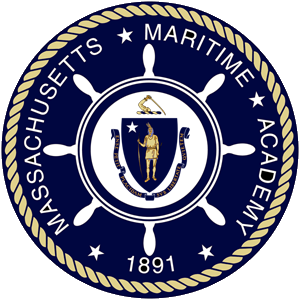MT-4371
Sea Term IV: Marine Transportation
Course Description
Provides an opportunity for cadets to obtain sea service as an officer in charge of a navigational watch in a structured shipboard training program. The training uses a building-block approach bringing the cadet up to an acceptable level of proficiency in each area of required competence. Shipboard training is closely integrated with the shore-based academic curriculum at the Academy. Particularly focusing on watchstanding and celestial navigation, the senior cruise is an opportunity for the Marine Transportation cadet to put together all facets of shipboard operations and to utilize them while in charge of the vessel and watches.
This course consists of an approximately 52-day long shipboard experence on the training vessel including watchstanding, maintenance and training.
Learning Objectives
Demonstrate knowledge and understanding of the following STCW elements:
- OICNW-A2.3 The use of routeing in accordance with the General Provisions on Ships’ Routeing
Demonstrate proficiency in the following skills:
- OICNW‑1‑1A Adjust a sextant
- OICNW‑1‑1B Measure the altitude of the sun
- OICNW‑1‑1C Obtain a celestial fix

- OICNW‑1‑1D Measure the altitude of the sun at meridian passage (local apparent noon)
- OICNW‑1‑1E Celestial running fix
- OICNW‑1‑1F Star Fix
- OICNW‑1‑1G Measure the altitude of at least 3 stars
- OICNW‑1‑3B Chart selection
- OICNW‑1‑3C Route planning
- OICNW‑1‑4A Position fix by GPS
- OICNW‑1‑4B Use of GPS position save function
- OICNW‑1‑4D Use of echo sounder
- OICNW‑1‑5F Azimuth of the sun

- OICNW‑1‑6A Steering gear test
- OICNW‑1‑6B Set weather controls
- OICNW‑2‑2A Watch relief

Topics
Training
- Celestial Navigation
- Marine Sextant
- Sunline/ Azimuth
- Computation of LAN
- Rising Phenomena
- Voyage Astracts
- Star Sight
- Latitude by Polaris
- Cargo Gear
- Fundamentals of Cargo Ops.
- Married Fall Rig
- Hydraulic Crane
- Communications
- VHF Radio Telephone
- GMDSS Workstation
- Electronic Navigation
- AIS
- Satellite Navigation Systems
- ECDIS
- Advanced Firefighting
- Ship's Preplans
- Structural Fire Protection
- Lifesaving
- Lifeboat Launching and Recovery
- Liferaft Davits
- Survival Craft Locating and Communicating Devices
- Search and Rescue
- Navigation General
- Lookout
- Steering Systems and Engine Order Commands
- Navigation Rules
- Marine Weather Obs
- Heavy Weather Avoidance
- Logbook Review
- Chart & Pub Corrections
- Bridge Control Systems
- Piloting
- Advanced Piloting Evolution
- Precision Anchoring Planning
- Advanced Piloting Evolution
- RADAR
- Radar Watchstanding
- Radar Plotting & Navigation
- ARPA
- Rigging
- Boatswain's Chair, Stage, and Pilot Ladders
- Rigging Exercise
- Safety
- Hand Tools
- SOLAS & USCG Inspections
- Safety Procedures Aboard the T.S. KENNEDY
- Shiphandling
- Shiphandling & Man Overboard
- Precision Anchoring Exercise
- Seamanship
- Splicing: Braided/Plaited Line
- Mooring Lines
- Ground Tackle
- Watch Standing
- Intro to Deck Watchstanding
- Bridge Command and Control Systems
- Collision Avoidance
- Celestial Navigation
Watchkeeping
- Cadet Officer of the Watch
- Bridge Resource Management
- Proper Watch Assumption and Relief
- Vessel Underway Monitoring
- Complied with Rules of the Road
- Use of Professional Terminology
- Bridge Equipment Operation Competency
- Maintenance of Situational Awareness
- Navigator
- Vessel Position Fixing Intervals
- Use of Charts & Publications
- Computing Compass Error
- Effective Communication
- RADAR and ECDIS Observer
- Maintain Vigilant Watch
- Used Equipment to Fix Vessel Position
- Assessed Risk of Collision
- Helmsman
- Accurate Steering
- Vigilant Supervision of Underclassmen
- Weather Watch
- Provide Updated Weather Report
- Ensure Accurate Weather Observation and Reporting
- Cadet Officer of the Watch
Maintenance
- Work on Deck with Chief Mate & Bosun
- Supervision of Underclassmen
- Coating Upkeep
- Shipboard Equipment Upkeep
- Work on Deck with Chief Mate & Bosun
